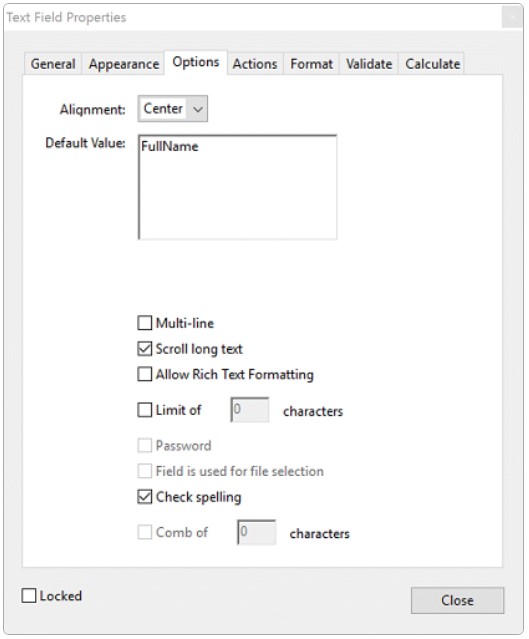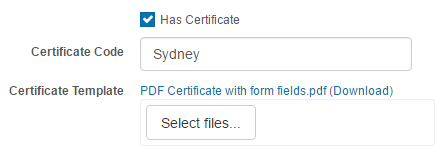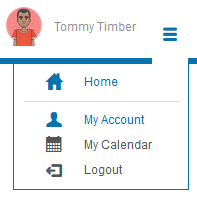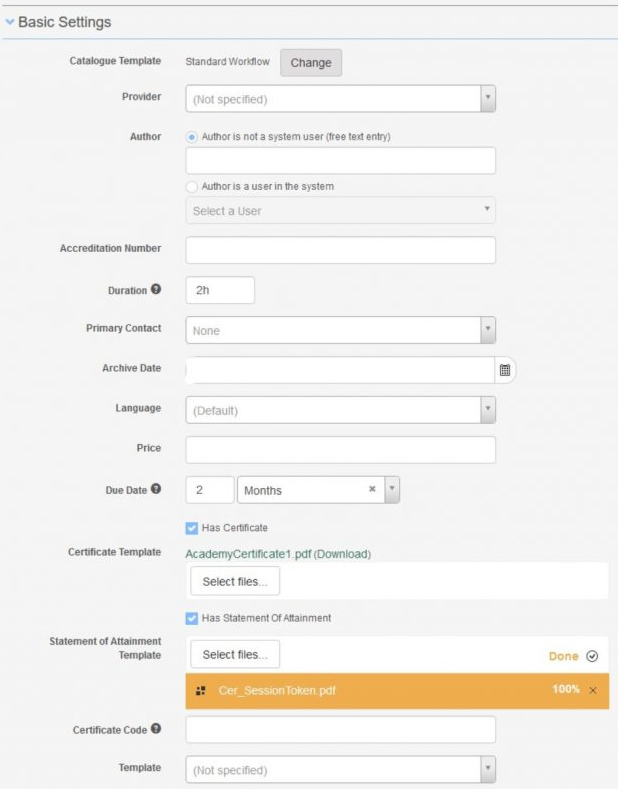Welcome to the Janison Academy help portal
Learning
The system supports two types of certificate:
Certificates can be linked to catalogue items and generated when users complete the learning (certificate of completion) or are part way through the learning (statement of attainment).
Certificates are based on PDF templates containing form fields that are populated with user and learning details. Click on the thumbnail below to check a generated certificate of completion.
A default certificate can be uploaded to the system or specific certificated pending on the learning asset type.

You’ll need two applications to complete your certificate template. These are:
There are two broad steps required in the process of creating a certificate template.
Use a document editor such as Microsoft Word to create a document and add the static text and images. Once the design is complete and saved as a Word document, save the document in PDF format.

Use a PDF editor such as Adobe Acrobat Pro DC to add form fields into the PDF document. The required fields must be named using the correct field name as listed at the bottom of this page.
Example process using Adobe Acrobat Pro DC:


The form fields are listed in the table below. These can be also be viewed in the system by navigating to Settings > Tenant Settings and accessing the Certificate Templates section.
| Name | Field name as required in Certificate | Description |
|---|---|---|
| Given Name | GivenName | The user’s first name |
| Surname | Surname | The user’s last or family name |
| Full Name | FullName | The user’s given and surname |
| Address | Address | This can include various address fields |
| Mobile Phone Number | MobilePhone | The user’s mobile number |
| Name of Course | NameOfCourse | The name of the course user has completed |
| Date of Completion | DateOfCompletion | The date the course was completed |
| Date of Birth | DateOfBirth | The user’s date of birth |
| Student Number | StudentNumber | The user’s student number |
| Organisation Unit | OrgUnit | The user’s unit or department |
| Organisation | Organisation | The user’s organisation |
| Group Type | GroupType | The group that user is a member of |
| Group type group name | GroupType[GroupTypeName] | Users active group membership for the group type specified |
| Course Completed Date | CourseCompletedDate | The date the user completed the course |
| Course Completed Year | CourseCompletedYear | The year the course was completed |
| Course Completed Month | CourseCompletedMonth | The month the course was completed |
| Course Completed Day | CourseCompletedDay | The day the course was completed |
| Certificate Number | CertificateNumber | Certificate number for the user’s certificate |
| Score | Score | The total score a user received in a test |
| List of answers in course | ListOfAnswersInCourse | Lists the user’s answers |
| Expiry Date | ExpiryDate | The date the learning asset expires. |
| Catalogue Item Duration | CatalogueItemDuration | The duration of the catalogue item |
| Custom entity name | Custom.EntityName.FieldName | A custom attribute |
| Points | Points | Will include CPD points on the certificate |
| Today’s Date | TodaysDate | This is the date the certificate is downloaded |
| Competency | Competency.Fieldname | Can include competency information. Only for statement of attainment |
| Asset | Asset.Fieldname | Include specific asset names associated with the enrolment |
| Asset (Session) | Asset.SessionFieldName | Can include the session details |
Janison Academy can generate and include QR codes on certificates.
Note the following points about enabling and using QR codes on certificates:

To include a QR code on a certificate, an image field with the token QRCode needs to be added to the certificate template. Only one QR code can be added to a certificate. See the help content on creating certificate templates for more information.
Certificate templates can be linked in the tenant settings area or in the catalogue item. Templates uploaded to a catalogue item override templates uploaded in tenant settings.
Browse to Settings > Tenant Settings.


Certificates can be added in two locations in the system:
By default, certificate templates uploaded in the tenant settings will be used by all catalogue items. Linking a certificate template directly to a catalogue item will override the certificate template uploaded in the tenant settings.
Certificates each have a unique number generated by the system. Once a certificate has been generated for a user, the number will not change. If the certificate number format is customised as outlined below, the certificate number will not change for a user who already has their certificate.
By default the number includes three tokens, {code}{########}/{year}.
The example below is from a certificate where the certificate number has been generated using a default certificate format.
WHAT is first part of the catalogue item identifier {code} .
00000055 are the eight user enrolment numbers {########}.
/2017 is the year the certificate was generated {/year}.

You can include or exclude any of the three tokens outlined above by editing the Format for Certificate Number field. For example you could just include the user enrolment number. This would ensure a unique number for every certificate.

It would appear on the certificate like this.

You can add characters in addition to one or more of the tokens.

It would appear on the certificate like this.

The certificate number can be customised further for individual catalogue items. Whatever you enter at the catalogue item level, it will replace the {code} token. In this example we have left the format for certificate number field blank in the tenant settings. We recommend selecting a format that will result in a unique number for each certificate.

We added Sydney in the Certificate Code field at the catalogue item level.

The certificate will be generated without the four letter catalogue item code, WHAT, this token will be replaced with Sydney.

In this example we have customised the format for certificate number field. Note that you must use the {code} token as part of your format.

We have again entered Sydney as the Certificate Code at the catalogue item level.

The certificate number will appear as below.

There are several places in the system where learners can access their certificates.
Certificates can be accessed from My Learning Transcript. See the document on My Learning Transcript for further information on how to enable the Certificate column.

When a learner launches a catalogue item, an interim screen is displayed where the certificate can be accessed. Your screen may look different depending on the configuration of your catalogue items.

Learners can view certificates by accessing the account details from the home menu. The certificates field will need to be made visible in the details view of user settings for this section to display. You can read more about this topic in our document on user settings.


The progress of competencies attached to a catalogue item or learning asset within a catalogue item can be shown on the Statement of Attainment (SOA).
An SOA can be downloaded before the learner has completed the catalogue item.
Please note the following prerequisites:

SOA templates are created in the same way as certificate templates and can include the same tokens as certificates, but must also include references to all linked competencies for the catalogue item.
Each linked competency must be referenced by a corresponding line in the SOA template. For example, if there are 10 linked competencies, there must be 10 lines referencing these in the SOA template. Each competency line must contain 3 fields:
An excerpt from an example SOA template is shown below:

Note: While default certificate templates can be set at the tenant level and overridden at the catalogue item level, SOA templates can only be attached at the catalogue item level.

1300 857 687 (Australia)
+61 2 6652 9850 (International)
ACN 091 302 975
ABN 35 081 897 494
© 2024 Janison
Janison acknowledges the traditional owners of the land on which we work and meet. We acknowledge the continuous care of the land, animals and waterways. We pay our respects to Elders past, present and emerging.